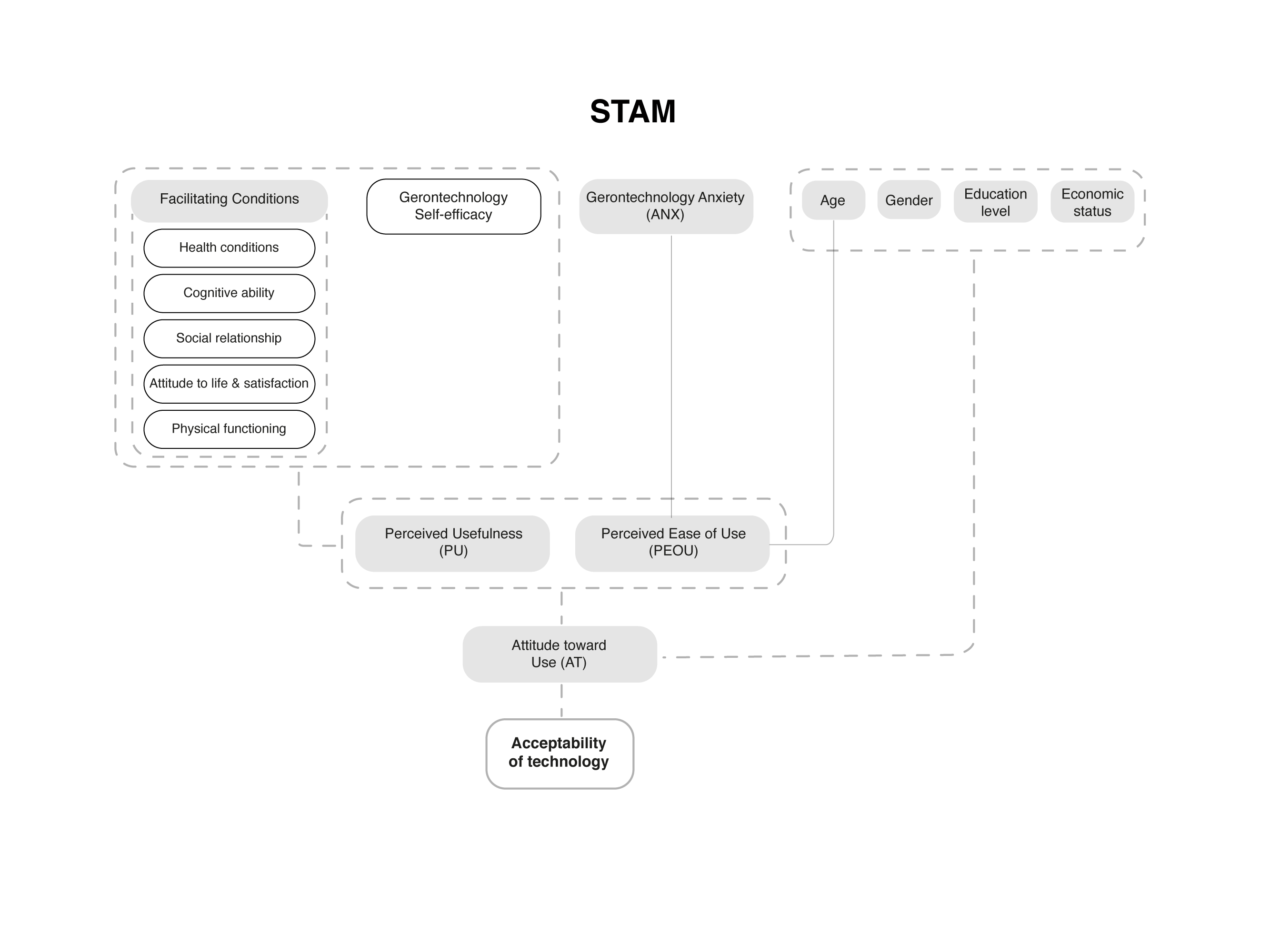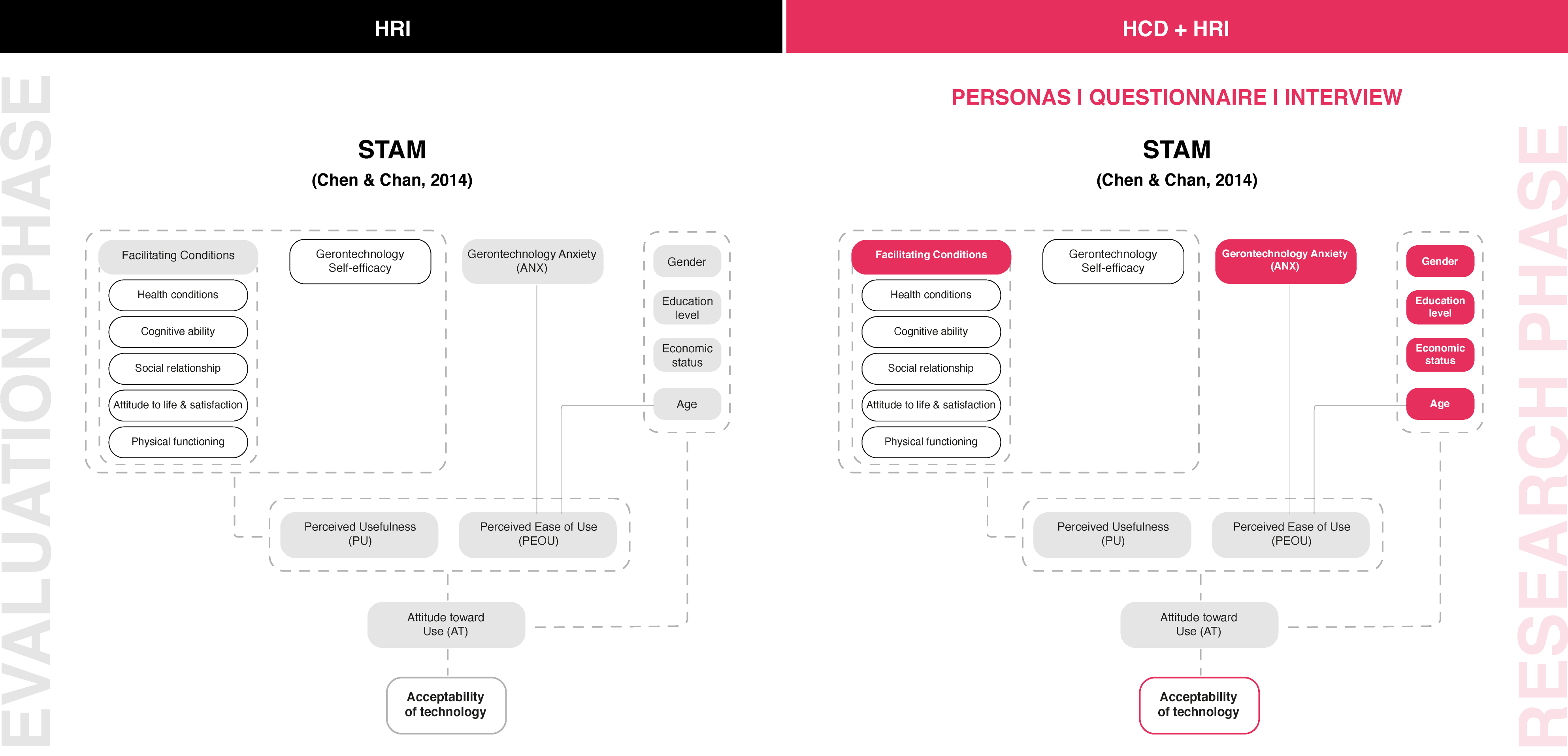STAM
Developed by Chen & Chan (2014)
Senior Technology Acceptance Model
The STAM (Senior TAM) was developed to assess the acceptability of gerontechnologies, i.e. technologies in relation to the physical-cognitive aspects that characterize elderly users. In addition to the constructs already present within the UTAUT model (PU, PEOU, ATT), the STAM includes anxiety (ANX) and perceived utility of elderly users and some facilitating conditions that include health conditions, cognitive and physical abilities, social relationships and quality of life. The model considers moderating elements such as age, gender, education and economic level.

HCD
HRI
Through the HCD’s own methods, objective information about the users (age, gender, educational and economic level) can be analyzed through the personas method. Other HCD methods, such as the interview and the direct questionnaire, are considered effective in collecting qualitative and quantitative data on facilitating conditions and anxiety about robots and assistive technologies. Therefore, the most effective methods to analyze the selected variables of STAM are: Personas, questionnaires, structured and unstructured interviews. Below is the architecture of the STAM method and the relationships between its constructs that determine the acceptability of the technology. In evidence are the influential variables for acceptability that can be analyzed in advance through the HCD methods identified in the upper part of the scheme (personas, questionnaire and interview).
